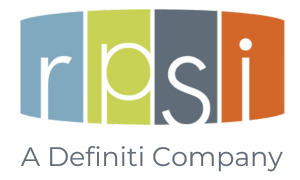Plan Sponsor Outlook – 3rd Quarter 2023
Taking a Cue
Recent Study Offers Employee Trends To Consider in Your Plan Design Strategy
T. Rowe Price’s 2022 “Participant Reactions and Trends” report revealed that employees have largely stayed the course during the market volatility, economic uncertainty and many other challenges over the past few years. However, the study also identified some interesting trends that have emerged. Such trends, shown in the following list, can help inform your plan design strategy and additional educational areas to focus on for the remainder of your plan year.
Digital Content Is King. Participants consumed nearly three times more digital retirement educational content in 2022 than in 2021. The most significant increase was with participants over 50 years old consuming content focused on retirement savings goals.
A Hard No. Participants have taken slightly more hardship withdrawals (4% more in 2022 vs. the 10-year average) but the amount of those withdrawals has decreased by over 20% compared to 2021.
Staying on Target. Ninety-nine percent of participants stayed the course and didn’t make a change in their investment strategy in the fourth quarter (Q4) of 2022. In addition, participants with 100% invested in a target date product were 15 times less likely to make a change than those with 0% invested in a target date product during Q4 2022.
You Are What You Owe. Participants who take multiple loans per year have a deferral rate that is lower — by an average of 2.3 percentage points — than those who do not take multiple loans.
Maxing Out the Tax-Deferred Compounding Opportunity. Participants who are near retirement and have not taken a hardship withdrawal have an average of three times more in savings than their counterparts who have taken a hardship withdrawal.
Plan Sponsor Considerations
Here are a few strategies to consider that could help support the positives in these trends:
- Consider reinforcing educational efforts to help increase awareness and knowledge of target date funds.Continue to educate employees about the ramifications of taking a loan or hardship withdrawal, along with the opportunity cost related to tax-deferred compounding.
- Expand your offering of sustainable retirement planning tools and look to enhance digital content and communication mediums offered, giving employees a diversity of ways to learn, acquire knowledge and boost financial literacy.
- It may sound simple, but there is perhaps no better way to support employee retirement savings than by continuing to promote the concept of tax-deferred compounding and the potential growth opportunity it offers.
- If you aren’t already, consider implementing emergency savings vehicles for employees, such as those now available through the passing of SECURE Act 2.0.
The report is based on plans with approximate assets >$25 million with T. Rowe Price as the recordkeeper. The report findings can be viewed at https://tinyurl.com/8y3w7sxh.

Pre-Launch Planning
Thinking About Adding a Financial Wellness Program? Here are Three Things To Consider
Callan’s 16th annual “Defined Contribution (DC) Trends Survey” offers the latest developments on a number of retirement plan topics, including SECURE 2.0 (prior to passage), diversity, equity and inclusion, plan design, governance, legislation, investment management and participant advice. If you’re thinking about implementing a financial wellness program for your employees, the survey also offers key insights into the process, including the following three key components.
Designing and Monitoring a Program
The survey found that the responsibility for designing and monitoring the financial wellness program most often lands on the Human Resource staff’s plate, rather than a governance committee. In addition, unlike most defined contribution plans, financial wellness generally does not fall under the Employee Retirement Income Security Act of 1974. This means employers that add benefits outside the existing legislative or regulatory framework do so at some level of risk. The survey’s authors also suggest that plan sponsors consider how to best monitor and manage these benefits. While the two programs (retirement and financial wellness) may interact, they are typically monitored by separate people or teams, which can lead to efficiency gaps. DC plan fiduciaries may require regular reporting on the financial wellness program in conjunction with their ongoing plan monitoring to ensure both programs are operating optimally.
Prioritizing Needs and Objectives
The survey revealed that the top financial wellness needs were in the areas of savings behaviors and roadblocks to saving, including budgeting and debt management. Nine out of 10 respondents indicated retirement savings was a top financial need (3.9 weighted average rank out of 5). Sixty-three percent highlighted emergency savings needs (2.3) and 56% called out either budgeting (2.0) or debt management (1.8). One-quarter reported offering some sort of incentives to participate in a financial wellness program.
Means of Soliciting Employee Financial Wellness Needs
| Internal Survey | 41% |
| Individual Feedback | 19% |
| Focus Group | 6% |
| No Means | 25% |
Top Financial Needs Identified
| Retirement Savings | 3.9 |
| Emergency Savings | 2.3 |
| Budgeting | 2.0 |
| Debt Management | 1.8 |
| Healthcare Spending | 1.6 |
| Student Loans | 1.5 |
5 = most important. Total ranking is weighted average score.
Measuring Effectiveness and Determining Success
Respondents prioritized usage, participant feedback or surveys, and return on investment to measure financial wellness program success.
Top Criteria To Gauge Success of Financial Wellness Program
| Usage | 4.5 |
| Participant Feedback or Surveys | 2.5 |
| Return on Investment | 1.8 |
| Impact on DC Plan Savings Behaviors | 1.8 |
| Increased Engagement | 1.6 |
| Cost | 1.2 |
| Ease of Administration | 1.1 |
5 = most important. Total ranking is weighted average score.
Callan’s 2023 “Defined Contribution (DC) Plans Survey” can be viewed at https://tinyurl.com/2p8ty75h. A free registration is required to access the survey.

Plan Sponsors Ask…
According to a December 2022 report from the U.S. Government Accountability Office, women still earn an estimated 82 cents for every dollar men make. Not only does that mean women likely earn less in their lifetimes, they also have less income to put toward retirement. In addition, a new study by 401(k) platform Guideline found women report feeling more overwhelmed and less in control toward their retirement savings than men (48% vs. 27%). They were also likelier to experience feelings of frustration (31% vs. 21%), intimidation (30% vs. 18%) and confusion (22% vs. 9%). As a result, fewer women are saving for retirement than men (69% vs. 80%). In addition, 55% of men save more than 10% of their income, whereas only 36% of women claim the same. The survey also found that women are nearly twice as likely as men to self-identify as novice investors.
The survey points to fundamental plan features for employers to have in place to begin closing the gender gap: automatic features with a robust employer match, along with tools and resources to help improve financial wellness. Targeted educational campaigns that focus on boosting retirement savings literacy and confidence with the overall retirement planning process should also be considered. In addition, a recent LIMRA survey indicates that women who work with a financial professional are much more likely to complete several retirement planning tasks that are recommended to bolster retirement readiness.
Previously, the Internal Revenue Service permitted self-certification for hardship distributions, but it was the responsibility of the plan to obtain any records or evidence needed to prove compliance if the validity of the distribution was challenged. Therefore, some plan administrators and recordkeepers were hesitant to permit self-certification. Thanks to SECURE Act 2.0, for plan years beginning on or after December 29, 2022, plan administrators may rely on certification by a participant verifying that they have met the requirements for a 401(k) or 403(b) plan hardship distribution without this extra documentation. The employee’s written self-certification must state that circumstances for the hardship exist, the amount requested is not more than the amount required to satisfy the financial need, and the employee has no alternative means to satisfy such need. These changes are optional and are effective for calendar year plans now.
Employers have reevaluated their retirement plan designs with an eye toward making it easier for employees to join plans and start saving, according to new Vanguard Group data. For Vanguard recordkeeper plans, 72% of employers permitted employees to participate in the plan immediately, compared to 58% in 2012; 86% allowed for entry within three months of employment. For insight on additional potential plan design enhancements, check out Vanguard’s “The Changing Workforce Environment: How Employer Plans Can Help Attract and Retain Employees” (March 2023) at https://tinyurl.com/yvx8pb2m.
Pension Plan Limitations for 2023
- 401(k) Maximum Elective Deferral – $22,500* (*$30,000 for those age 50 or older, if plan permits)
- Defined Contribution Maximum Annual Addition – $66,000
- Highly Compensated Employee Threshold – $150,000
- Annual Compensation Limit – $330,000

Plan Sponsor’s Quarterly Calendar
- Audit third-quarter payroll and plan deposit dates to ensure compliance with the U.S. Department of Labor’s rules regarding timely deposit of participant contributions and loan repayments.
- Verify that employees who became eligible for the plan between July 1 and September 30 received and returned an enrollment form. Follow up on forms that were not returned.
- For calendar-year safe harbor plans, issue the required notice to employees during October or November (within 30–90 days of the beginning of the plan year to which the safe harbor is to apply). Also, within the same period, distribute the appropriate notice if the plan features an Eligible Automatic Contribution Agreement, Qualified Automatic Contribution Agreement and/or Qualified Default Investment Alternative.
- Prepare to issue an announcement to employees to publicize the plan’s advantages and benefits, and any plan changes becoming effective in January.
- Conduct a campaign to encourage participants to review and, if necessary, update their mailing addresses to ensure their receipt of Form 1099-R, to be mailed in January for reportable plan transactions in the current year.
- Check current editions of enrollment materials, fund prospectuses and other plan information that are available to employees to ensure they are up to date.
- Provide quarterly benefit/disclosure statement and statement of plan fees and expenses actually charged to individual plan accounts during the prior quarter, within 45 days of end of the last quarter.
- Prepare and distribute annual plan notices, such as 401(k) safe harbor for safe harbor plans with a match, Qualified Default Investment Alternative annual notice, and automatic enrollment and default investment notices, at least 30 days before the plan year-end.
- Prepare to send year-end payroll and updated census data to the plan’s recordkeeper in January for year-end compliance testing (calendar-year plans).
- Verify that participants who terminated during the second half of the year selected a distribution option for their account balance and returned the necessary form.
- Review plan operations to determine if any Employee Retirement Income Security Act or tax-qualification violations occurred during the year and if using an Internal Revenue Service or U.S. Department of Labor self-correction program would be appropriate.
Consult your plan’s financial, legal or tax advisor regarding these and other items that may apply to your plan.
Kmotion, Inc., 412 Beavercreek Road, Suite 611, Oregon City, OR 97045; 877-306-5055; www.kmotion.com
©2022 Kmotion, Inc. This newsletter is a publication of Kmotion, Inc., whose role is solely that of publisher. The articles and opinions in this publication are for
general information only and are not intended to provide tax or legal advice or recommendations for any particular situation or type of retirement plan. Nothing
in this publication should be construed as legal or tax guidance, nor as the sole authority on any regulation, law, or ruling as it applies to a specific plan or
situation. Plan sponsors should always consult the plan’s legal counsel or tax advisor for advice regarding plan-specific issues.
This material is intended to provide general financial education and is not written or intended as tax or legal advice and may not be relied upon for purposes
of avoiding any Federal tax penalties. Individuals are encouraged to seek advice from their own tax or legal counsel. Individuals involved in the estate planning
process should work with an estate planning team, including their own personal legal or tax counsel.
